These pickleball recovery tips will help you heal faster and play again quicker!
1.) Self Massage
After a tough match, your muscles may be swollen and sore. The peak level of soreness won’t likely affect you until the next day. This is referred to as “Delayed Onset Muscle Soreness” (DOMS). [1]
Clinical signs [of DOMS] include reduced force capacities, increased painful restriction of movement, stiffness, swelling, and dysfunction of adjacent joints.
Massage is an amazing recovery strategy that helps to facilitate fluid exchange and lymphatic drainage support.
Rolling Pin Self Massage for Pickleball Recovery
My favorite massage tool for the legs and low back is a simple rolling pin. In the following video you can see how I recommend using a rolling pin to improve fluid exchange in the legs after total knee replacement surgery.
This same technique may be used to improve recovery after a pickleball match.
I most often recommend 3 minutes self massage above the knee and 1 minute self massage below the knee.
Foam Roller Self Massage
Using a foam roller on the floor to massage your calf muscles, thighs, gluteals, and lumbar paraspinal is a great way to facilitate fluid exchange or possibly improve soft tissue recovery.
In the following photos you can see each foam roll position. I often recommend spending 60-seconds in each position.
| Calf Muscle | 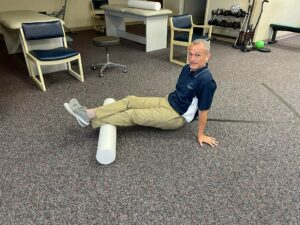 Pickleball Recovery Foam Rolling the Calf Muscle |
| Thigh (Quadriceps) | 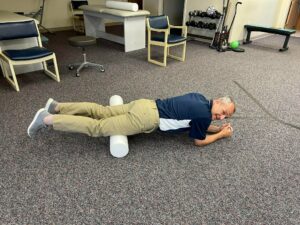 Pickleball Recovery Foam Rolling Thighs |
| Iliotibial Band | 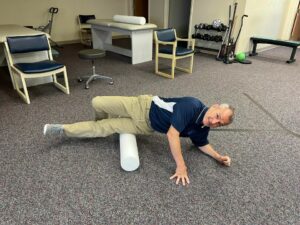 Pickleball Recovery Foam Rolling ITBand |
| Gluteals | 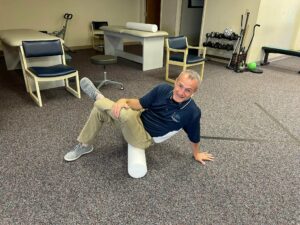 Pickleball Recovery Foam Rolling Gluteals |
Calf Muscle
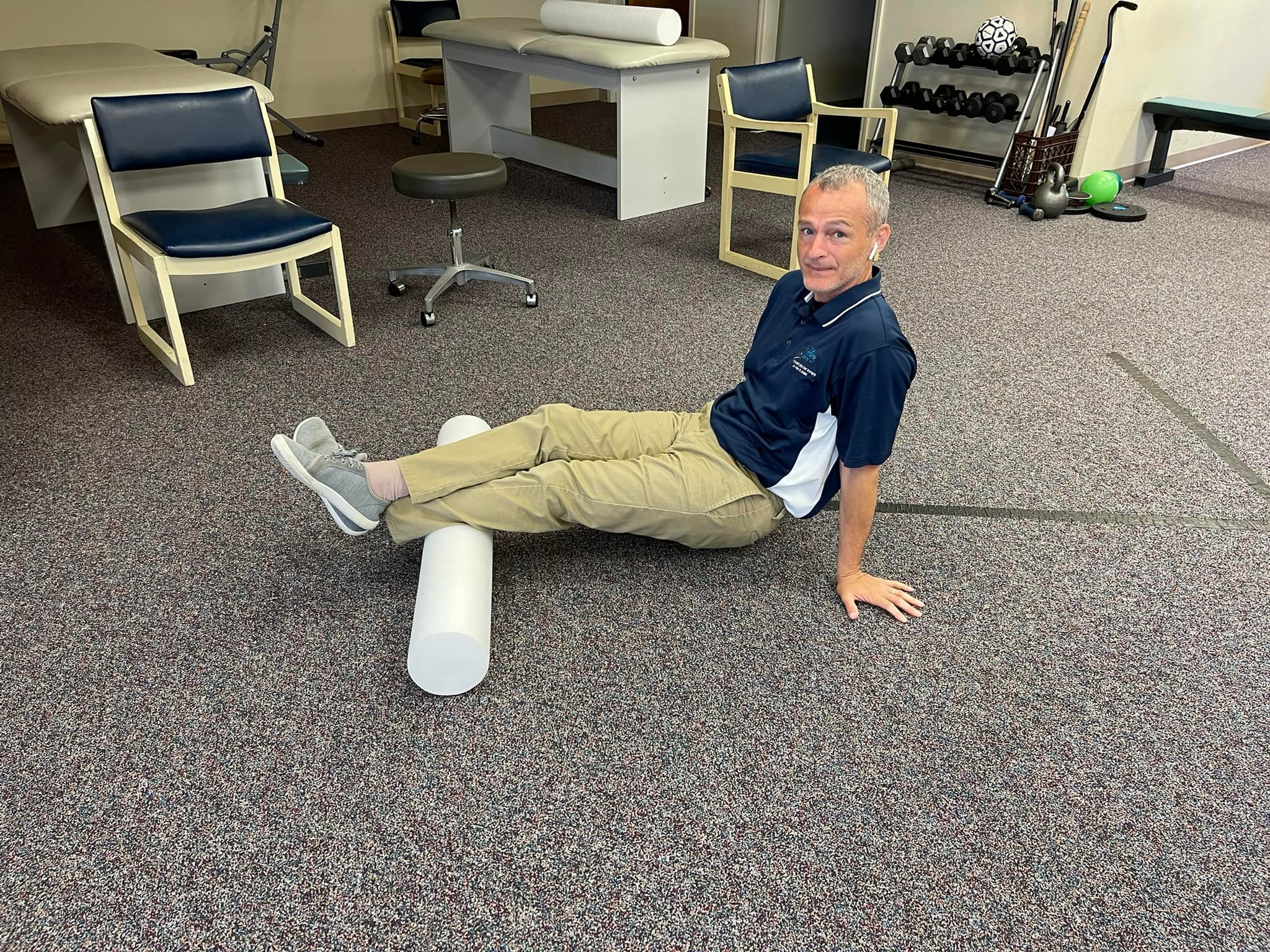
Thigh (Quadriceps) Muscle
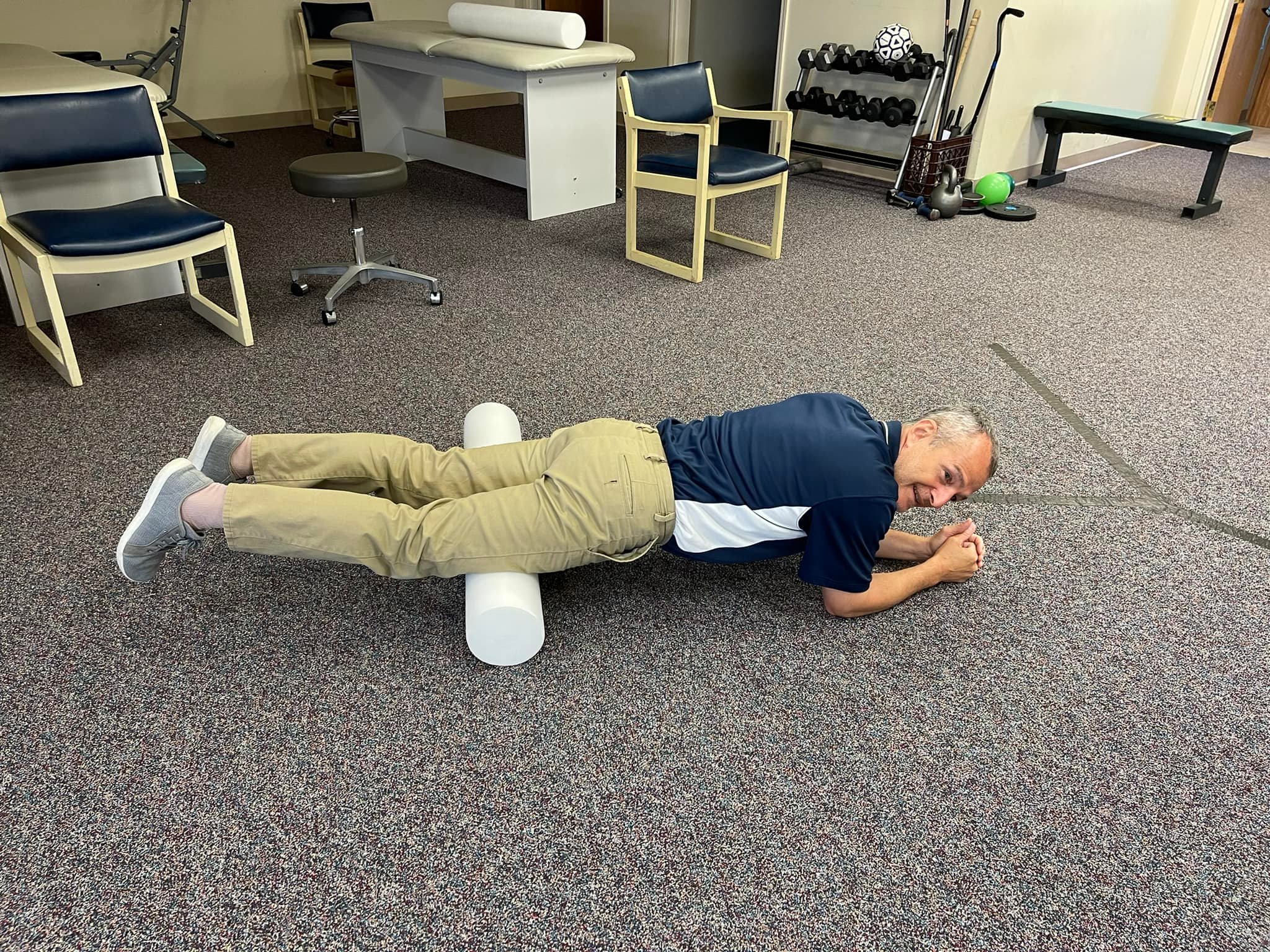
Iliotibial Band (IT Band)
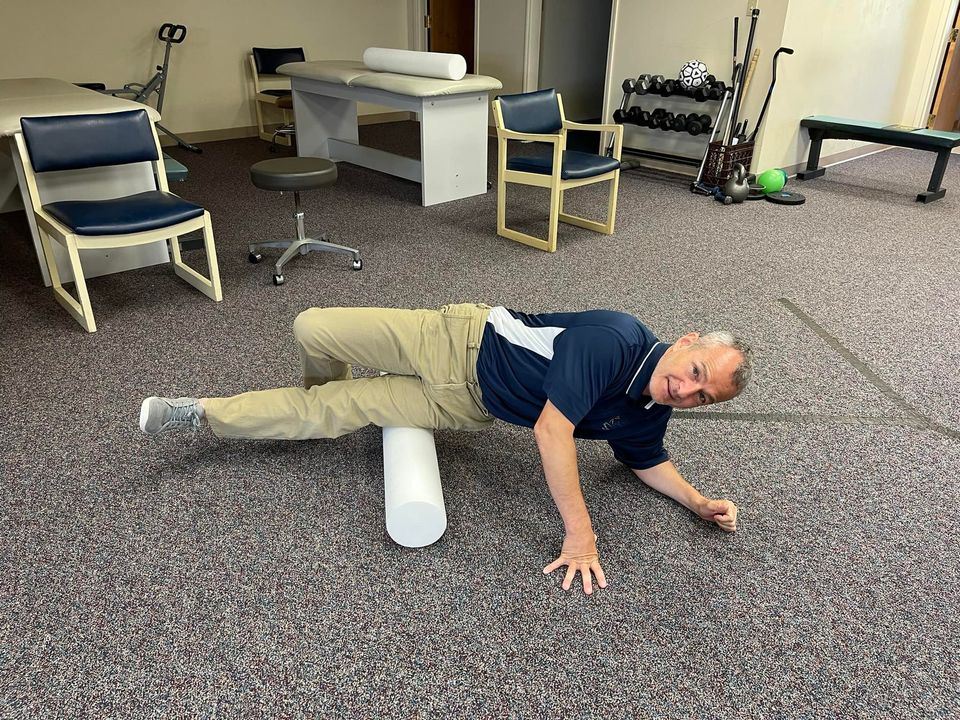
Gluteals
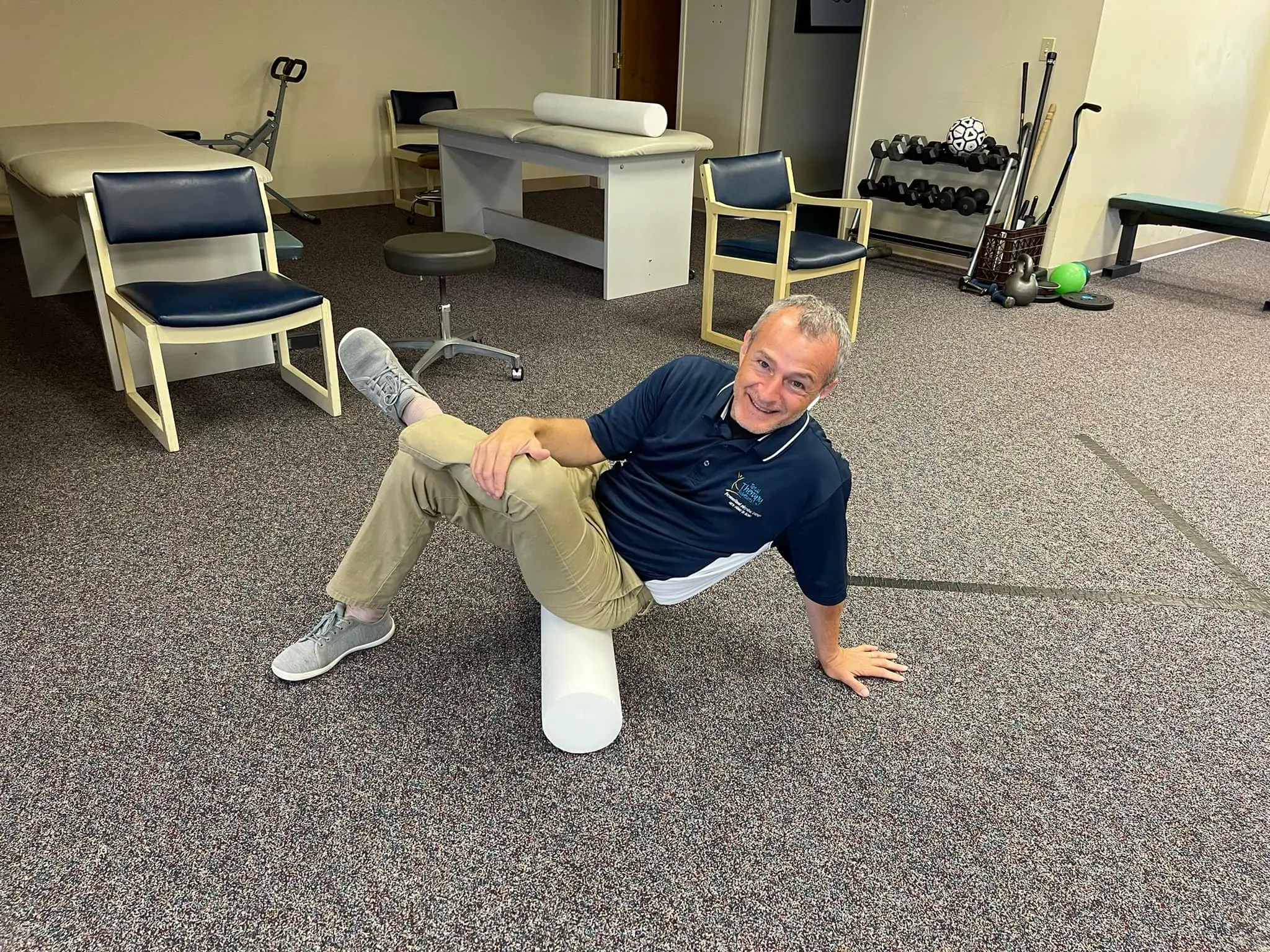
2.) Compression & Elevation
Some clients may experience increased swelling in the legs the day after a competitive pickleball match. A great pickleball recovery tip / hack to reduce lower extremity swelling is to utilize compression and elevation.
One study found that elevation to a level of 90-degrees of hip flexion was the most effective to reduce lower extremity swelling, but the position was too uncomfortable for most participants. 45-degrees of hip flexion was the ideal level of elevation to reduce swelling while maintaining comfort for the individual. [2]
Using an elastic wrap or lower extremity compression hose are also great to increase the effectiveness of elevation to reduce swelling.
3.) Hydration
Vigorous exercises increases fluid loss through perpiration and breathing. As your body loses hydration your ability to repair normal tissue damage is also reduced.
Stay adequately hydrated to improve your body’s natural ability to recover.
Although you may hear arbitrary guidelines for how much water you should consume, a great objective way to measure fluid loss and recovery needs is to track you bodyweight.
If you weigh 172-lbs before your match and after you match you are down to 168-lbs, you know that you have lost a total of 4-lbs of water weight.
While you can’t just drink 4-lbs of water in one sitting, you would want to re-hydrate until your bodyweight normalizes back to your original weight. This might take a couple hours of gradual rehydration.
This is a great article to learn more about using body weight as an objective measure of hydration.
4.) Nutrition
While you could go down a rabbit hole of research on post workout recovery nutrition, some of the general guidelines include consuming an easily digestible and well balanced small meal within 60-minutes after your workout. (Link) [3]
5.) Meditation & Mindfulness
A great pickleball recovery strategy is to take some time for meditation and mindfulness.
Mindfulness helps you increase awareness of your body and what you are feeling. As a physical therapist, I often hear patients telling me that they didn’t realize how tense they were until I pointed it out.
We tend to keep extra tension in the muscles of the upper back, neck, and shoulders when those muscles are sore from swinging a pickleball paddle. Being mindful of what you are feeling and using a guided meditation strategy allows you to release that tension and enter better state of tissue recovery.
References:
1. Hotfiel T, Freiwald J, Hoppe MW, Lutter C, Forst R, Grim C, Bloch W, Hüttel M, Heiss R. Advances in Delayed-Onset Muscle Soreness (DOMS): Part I: Pathogenesis and Diagnostics. Sportverletz Sportschaden. 2018 Dec;32(4):243-250. English. doi: 10.1055/a-0753-1884. Epub 2018 Dec 11. PMID: 30537791.
2. Liaw MY, Wong MK. [The effects of leg elevation to reduce leg edema resulting from prolonged standing]. Taiwan Yi Xue Hui Za Zhi. 1989 Jun;88(6):630-4, 628. Chinese. PMID: 2794965.
3. Aragon AA, Schoenfeld BJ. Nutrient timing revisited: is there a post-exercise anabolic window?. J Int Soc Sports Nutr. 2013;10(1):5. Published 2013 Jan 29. doi:10.1186/1550-2783-10-5

